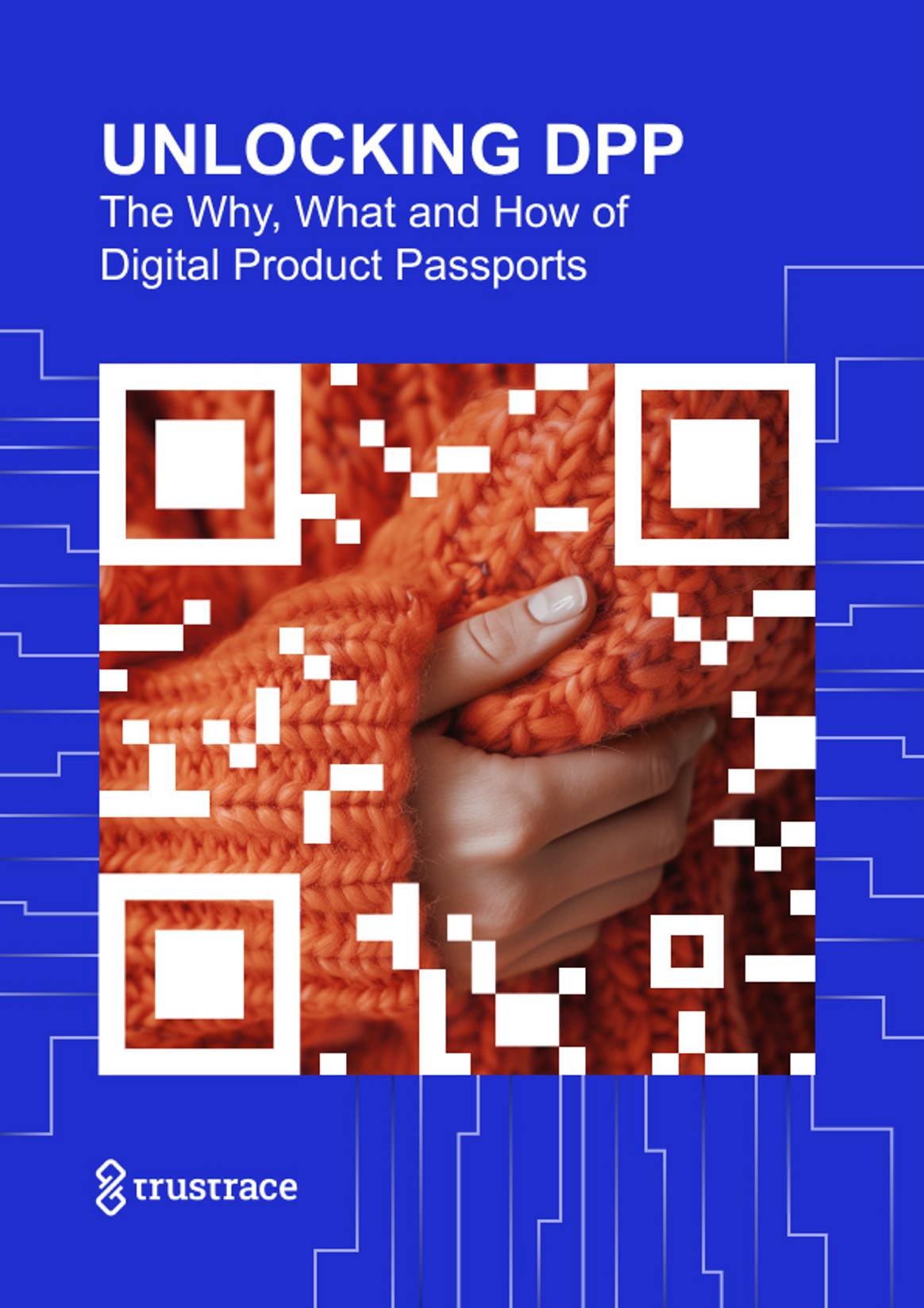Engaged in the clothing industry for 20 years.

Digital Product Passport: new guide by TrusTrace unlocks the Why, What and How
“I got into fashion because I love numbers and data …” said nobody, ever, as pointed out by the new digital product passport (DPP) playbook, launched by TrusTrace, a platform for supply chain traceability and compliance, and written by about a dozen subject matter experts. However, the European Parliament adopted the Ecodesign for Sustainable Product Regulation (ESPR) on 23rd April, 2024, which mandates that every textile product sold in European Union member countries is ‘Ecodesigned’ and has a DPP, to be implemented between 2026-2030.
That means much data and numbers coming the way of European textile companies, irrespective of size and revenue, but according to “Unlocking DPP: The Why, What And How Of Digital Product Passports”, the ESPR and the DPP within it are “exactly what the fashion industry has been asking for for years, it just didn’t know it”.
“The EU Ecodesign regulation and its digital product passport component are set up to provide the level playing field, with standard ways of measuring and communicating sustainability efforts and impact, that the industry has long been needing,” emphasises the guide.

It explains why and how the regulation sets about doing this, why it is pivotal to create a circular economy, what the ESPR and DPP entail, and what this means for all brands that are selling textile products in Europe. It also features insights from Marimekko, Kappahl and Ganni on the brand side and from international standards organisation GS1 and the Textile Exchange.
“We see it as an opportunity to heighten the level of information and transparency we offer consumers about products, but also as an opportunity to manage product data more efficiently, with the product afterlife in mind,” agrees Ganni co-founder Nicolaj Reffstrup.
“It is easy to see the hurdles and uncertainties, but we should all be excited about the data shift that will happen in the coming years. The quicker you prepare for compliance, the smoother the transition will be for you and your customer group. This guide is a great resource to get started on that journey and navigate the current uncertainties of legislation,” Reffstrup adds.
Busting myths
The book also busts some common myths and misconceptions about the DPP, for example that it is simply a QR code attached to a garment and an app. “It comprises digital information, physical product identification and a comprehensive digital system able to handle large volumes of data and facilitate multi-stakeholder data access and entry,” clarifies the book.
Another myth is that the DPP is merely a mechanism for collecting product-specific data to enable repair, recycling and consumer engagement. Instead, “it is a key facet of the entire EU bloc’s environmental and economic plan for achieving economic growth with reduced environmental impacts. The textile sector in Europe has been in decline for some time, and the EU Textile Strategy aims to revive it, extracting greater economic value and higher employment for the sector.
The DPP is also not only for textile products or fast fashion in particular. In fact, textile products (meaning all clothing, homeware and footwear products comprising a majority of textile materials) are only one of 19 product groups and 12 end-products like cosmetics, furniture, toys and others that the EU will require DPPs for. “The European Commission places textile products as having the highest circularity value of those in scope for DPP, demonstrating the economic potential hoped to be unlocked,” according to the book.

“In the future, DPP has potential to create customer value as a part of product storytelling and life cycle”, says Marjut Lovio, sustainability manager at Marimekko who has shared her sustainability and IT perspectives in the playbook. “We believe this guide can help the industry in moving towards circular business models.”
The good news is that not all DPP data requirements are new (which is another myth) but that some existing EU regulations like REACH and EU Ecolabelling already partially fulfil DPP data requirements. Brands already have some of that data and just need to integrate it into the DPP data and system framework. This is where the “How” section of the book comes into play — it offers a data protocol for brands to follow to start collecting DPP data and setting up their digital systems for DPP implementation.
What is a digital product passport?
The playbook also offers a “What” section that explains what the DPP is, namely its three core components: product data, unique identifiers and the required interoperable IT system (for decentralised data sharing). Especially useful is a definition of data carriers like RFID tags, QR codes, NFC tags and watermarks. This section also offers a breakdown of who and what is in scope, along with the required data systems.
“The operational components and requirements of the DPP are poorly understood, which is why we joined the Trace4Value project. We learned invaluable insights – such as the need for DPP data fields shown to consumers to be standardised – among many others, and we’re proud to provide our perspective for this playbook, to contribute to making it a comprehensive resource on what’s required for compliance with incoming DPP legislation,” states Sandra Roos, vice president of sustainability at Kappahl.
The “When” of DPPs – why brands and retailers should get started now
The “When” section answers the questions when the DPP will be introduced and enforced. It also offers an essential of the DPP timeline and requirements for textile products under the ESPR.
While the final data requirements, data standards and the IT systems architecture and interoperability are expected to be decided by 2026 only, “solid guidance” to get brands and retailers started on DPP preparation is already in place within the ESPR. Thus, the book urges them to get started already, using the aforementioned “How” section and especially the findings of the most recent and comprehensive textile DPP pilot study it contains.
The book “Unlocking DPP: The Why, What And How Of Digital Product Passports” is a useful resource for brands and retailers who want to get a headstart on the DPP and implement it successfully. The playbook can be downloaded from the TrusTrace website. In addition, in a webinar on 13th June, pilot participants will share their insights.


